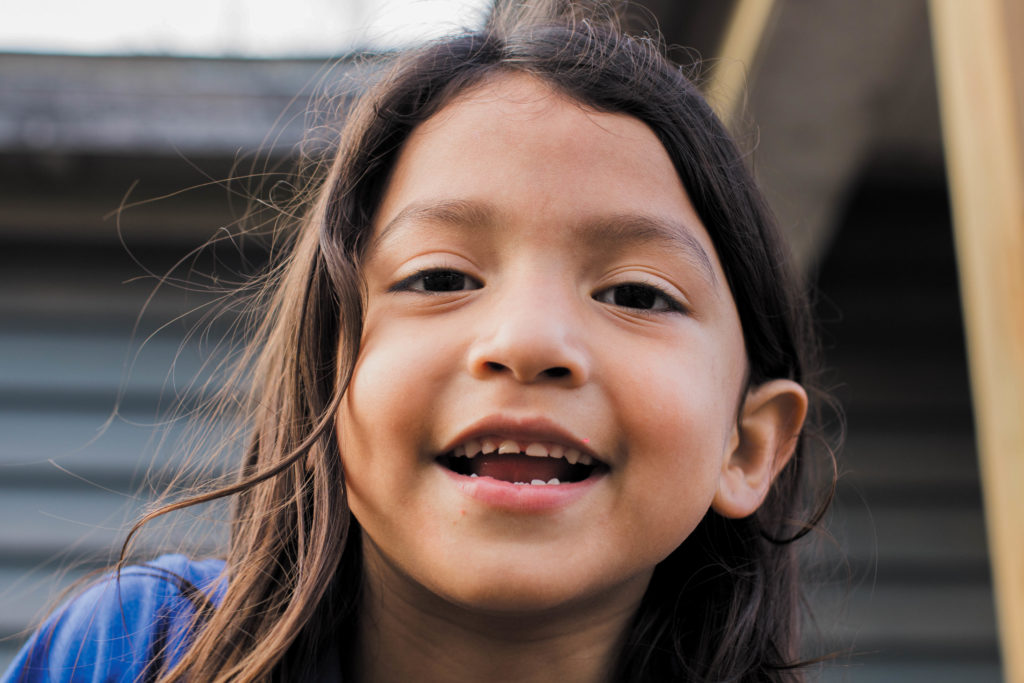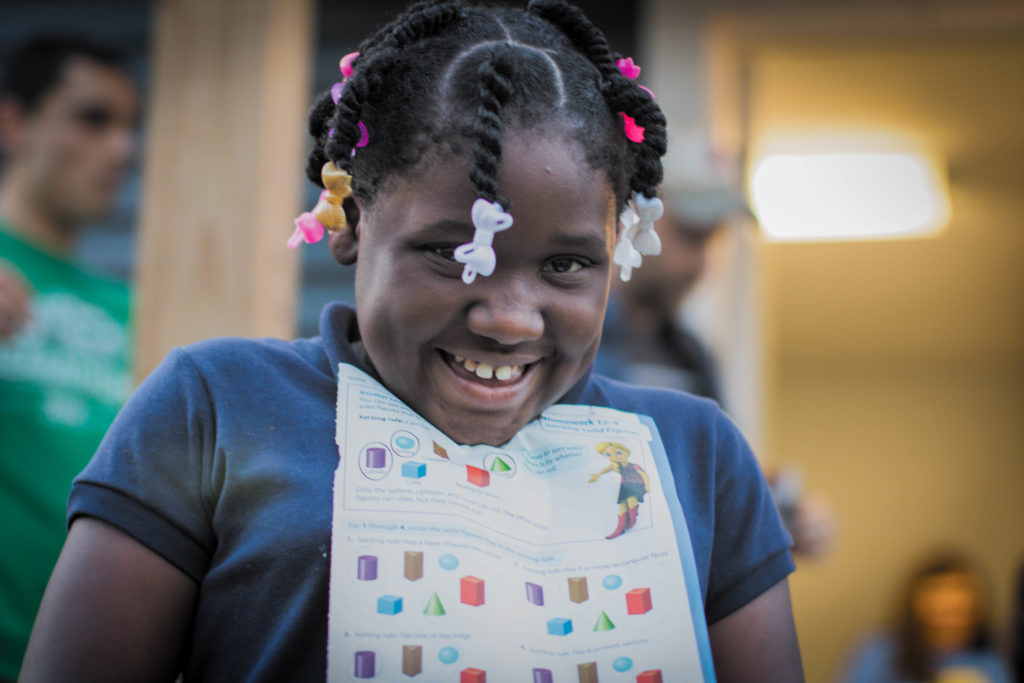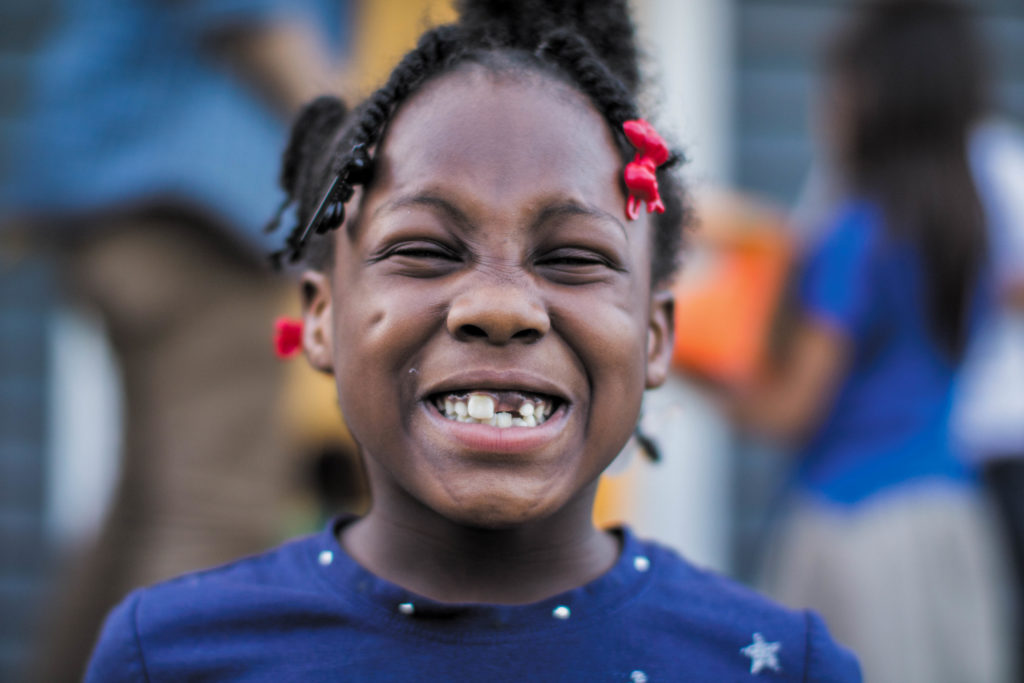Story by Aaron Cobbs | Photos by Sarah Barrientos
In the Kate Ross government housing complex, there is The Blue House, an after-school childcare center sponsored by Baylor Missions and Crossroads Fellowship Church.
For one hour each day, neighborhood kids come to The Blue House to work on their homework, get tutoring and participate in games and other activities with the volunteers. After a hard day’s play, kids can win prizes or receive snacks and food to take home.
Ten years ago, Crossroads Fellowship Church bought two houses that were condemned. They tore down one house so they could open up the field and repaired the other to use it for a summer day camp.
At that time, most of the kids in the Kate Ross neighborhood were in summer school, and the church learned that the kids needed help with schoolwork. Joel and Sarah Nelson, co-leaders and co-founders of The Blue House group, gathered a group of volunteers and decided to tutor the kids themselves. Since then, The Blue House group has met with Kate Ross kids every Tuesday and Thursday after school to tutor and play games.
When The Blue House first opened in the neighborhood, the kids did not trust the volunteers. Their outside environment and experiences had made it difficult to trust and rely on others for guidance and nurturing.
“When they come from the streets, it’s pure survival mode,” said Kerry Chapman, who has been volunteering at The Blue House for 10 years. “But, when they’re here, they get that love and attention that they’ve wanted.”
Baylor Missions partners with Crossroads Fellowship Church to volunteer at The Blue House. Michael Valencia, the co-leader of the Baylor Student Missions division of Blue House, said it’s hard to be a new volunteer and to connect with the kids, but the eventual bond is rewarding.
“The true relationship develops when the kid remembers your name because you’ve been there,” said Valencia.
The origins of the housing complex were as pure as the Blue House. The founder, Kate Ross Padgitt, was a major philanthropist. She donated to the Paul Quinn College and to the Central Texas College, both historically black institutions in Waco. In the mid-1900s, the city of Waco converted her homestead into the current Kate Ross government housing complex. In her honor, the city named the complex after her.
However, despite the good intentions of Padgitt, the complex has seen better days. In this neighborhood, there are crowded schools, crowded homes and even more crowded children who are either forced to stay in their confined areas or forced to leave because of redevelopment.
“In this neighborhood, there are about 3,000 people,” said Joel Nelson, co-founder of The Blue House. “That is a high population density. Ninety percent of the kids go to the same school and see the same people. If you have an incident or a fight, they never get to get away from it.”
The philosophy of The Blue House is that when they’re there, they get to be a kid. They get to smile, and they get to have fun.
“We’re trying to provide a place where they can have a normal time,” said Nelson. “A couple of hours a week is not going to change the world, but it’s good to know that they have some place that they can go.”
The Blue House provides that center that will extend far beyond school years. High school seniors have visited volunteers, saying how their time in The Blue House changed their lives and brought them peace. As the peacemaker between the neighborhood and the kids, The Blue House is a refuge — a place where the impoverished kids don’t just survive, but thrive.




